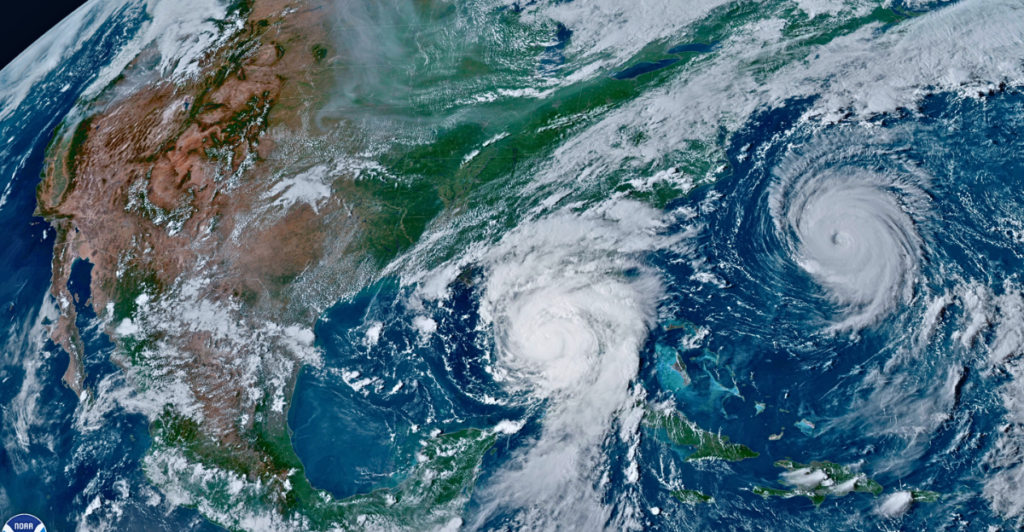
Florida’s red tide is already a nightmare—we’re talking dead fish piling up on beaches, toxic air that makes you cough like you’ve smoked a pack, and entire ecosystems crashing. But hurricanes? They make this disaster even worse. Instead of flushing red tide away, storms supercharge it, making it last longer, spread farther, and hit harder. Let’s dive into what this means for the great state of Florida.
What Even Is Red Tide?
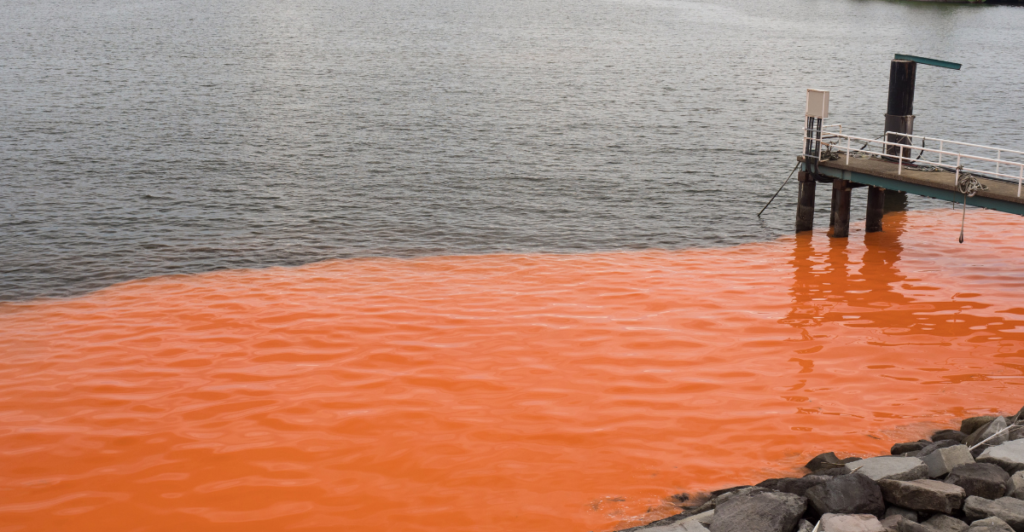
Red tide is caused by Karenia brevis, a tiny but lethal algae that releases toxins into the water. These toxins kill fish, make marine mammals sick, and—fun bonus—they go airborne, so people can breathe them in too. Red tide happens naturally, but thanks to human pollution, it’s getting worse, stronger, and harder to control.
How Hurricanes Make Red Tide Worse
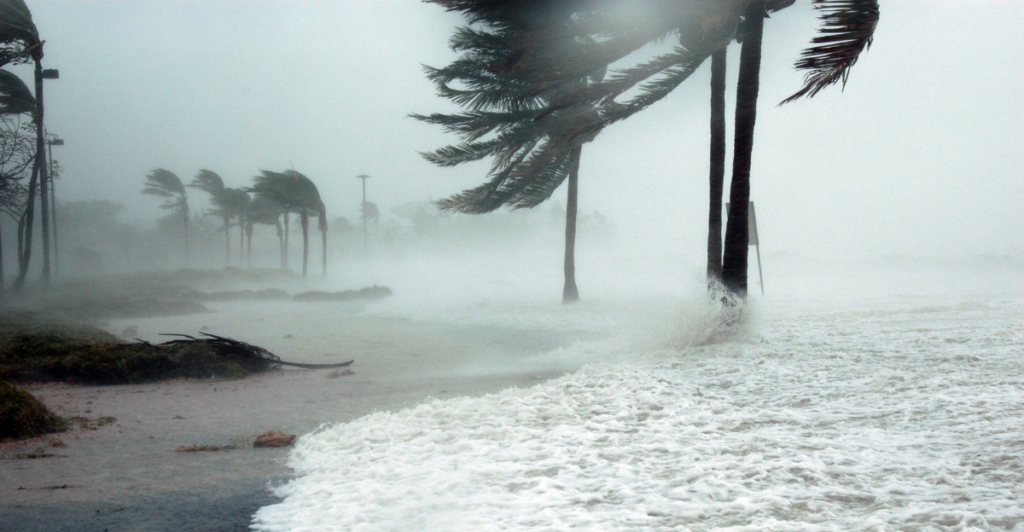
Hurricanes bring insane amounts of rain, storm surges, and flooding—all of which dump fertilizers, sewage, and other nasty stuff into Florida’s waterways. And guess what? Algae love that. The more nutrients they get, the bigger and badder the red tide blooms become. It’s like giving steroids to an already dangerous problem.
The Mess Hurricanes Leave Behind
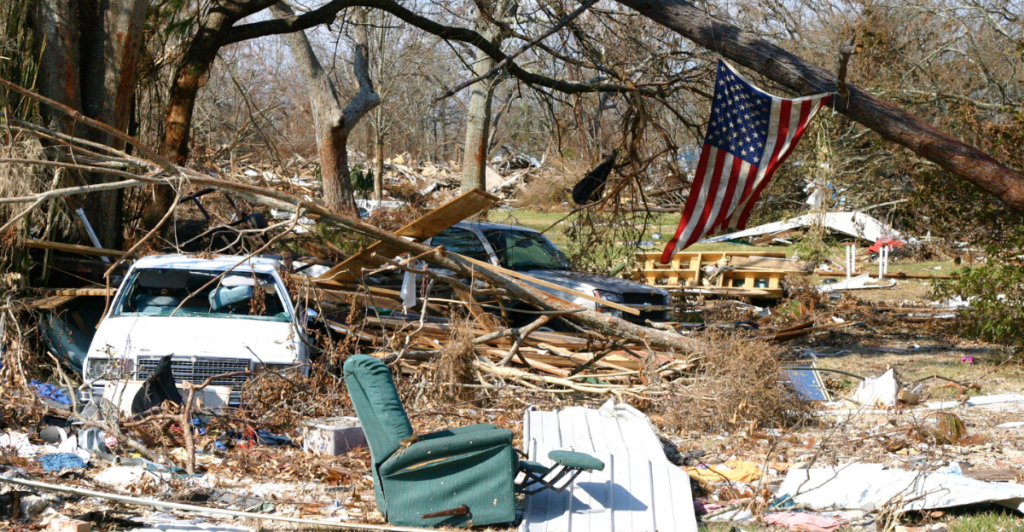
When a hurricane tears through Florida, it doesn’t just leave behind fallen trees and flooded streets—it also dumps tons of pollution into the ocean. Flooded septic tanks and broken sewage systems leak waste, while massive amounts of agricultural runoff spill into waterways, feeding red tide. Meanwhile, wetlands—nature’s natural water filters—often take serious damage, making it even harder to prevent future blooms.
Red Tide’s Greatest Hits – Mass Death and Chaos
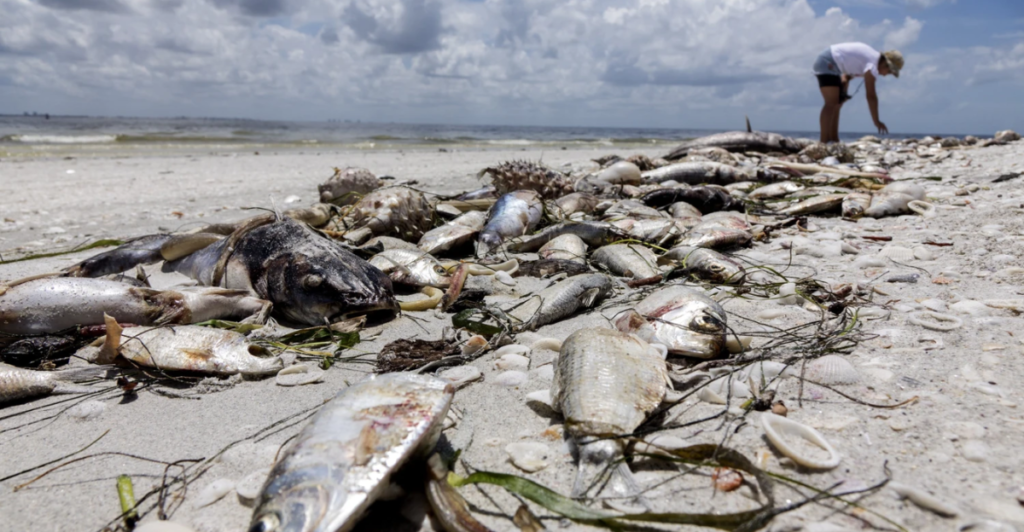
What does red tide actually do? Oh, just wipe out entire marine ecosystems. The toxins shut down the nervous systems of fish, dolphins, and manatees, killing them by the thousands. Birds that eat poisoned fish? Dead. Sharks, turtles, and anything else in the area? Either dead or fleeing. It’s an ecological horror show.
It’s Not Just the Fish – Humans Feel It Too
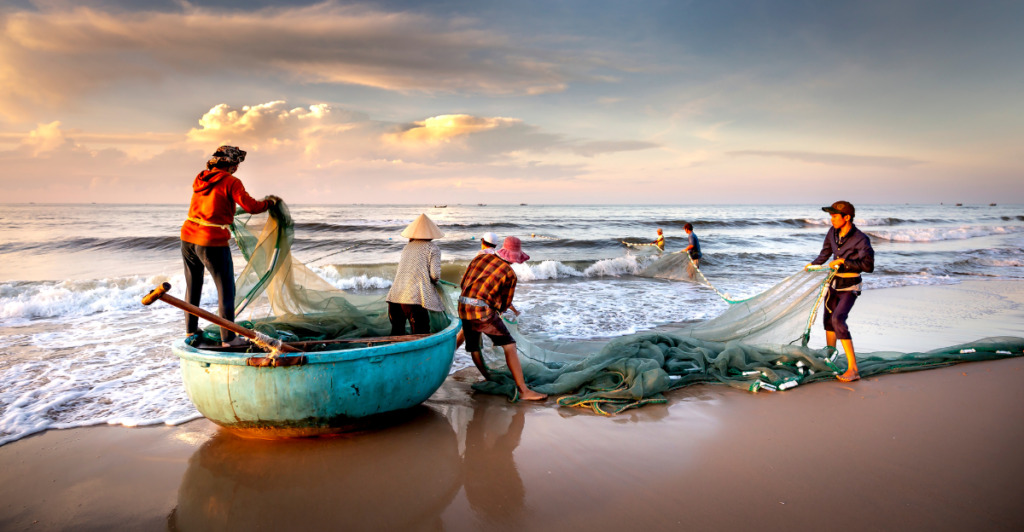
Think you’re safe because you don’t swim in red tide? Think again. The toxins become airborne, irritating your eyes, throat, and lungs. People with asthma? Good luck. Tourists? Coughing their way back to the airport. Businesses? Losing millions as beaches turn into fish graveyards.
Florida’s Economy Gets Wrecked
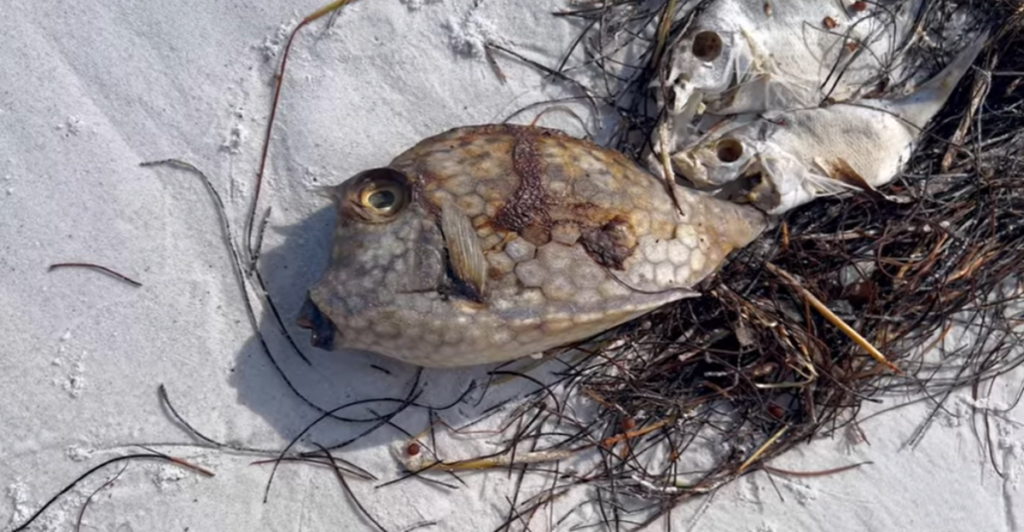
Red tide doesn’t just kill fish—it chokes Florida’s economy. Beach towns rely on tourism, but when shorelines are covered in dead marine life, tourists stay away. Fishing industries suffer massive losses as fish populations crash, while waterfront businesses struggle with fewer visitors. It’s a chain reaction where the environment suffers first, and then Florida’s economy takes a massive financial hit.
Is Climate Change Making It Worse? (Spoiler: Yes)

Rising ocean temperatures? Perfect for algae growth. Stronger, wetter hurricanes? Even more pollution runoff. Climate change is turning red tide into a monster that’s harder to predict, more widespread, and sticking around for longer stretches. So yeah, it’s a big deal.
Can We Actually Stop Red Tide?

Scientists are racing to find solutions, testing everything from clay treatments to ozone injections that break down algae toxins. Some researchers are even experimenting with bacteria that can “eat” red tide. But these methods are only temporary fixes. The real issue is pollution—if nutrient-rich runoff keeps flooding into Florida’s waters, red tide will just keep coming back stronger every year.
What’s Florida Doing About It?

Florida has taken steps to address red tide, such as limiting fertilizer use during rainy months and investing in better water treatment systems. The state has also increased funding for red tide research. But many environmentalists argue these efforts are too little, too late. Until Florida enforces stricter pollution regulations, red tide will continue to thrive and wreak havoc on marine life.
Can Regular People Help?
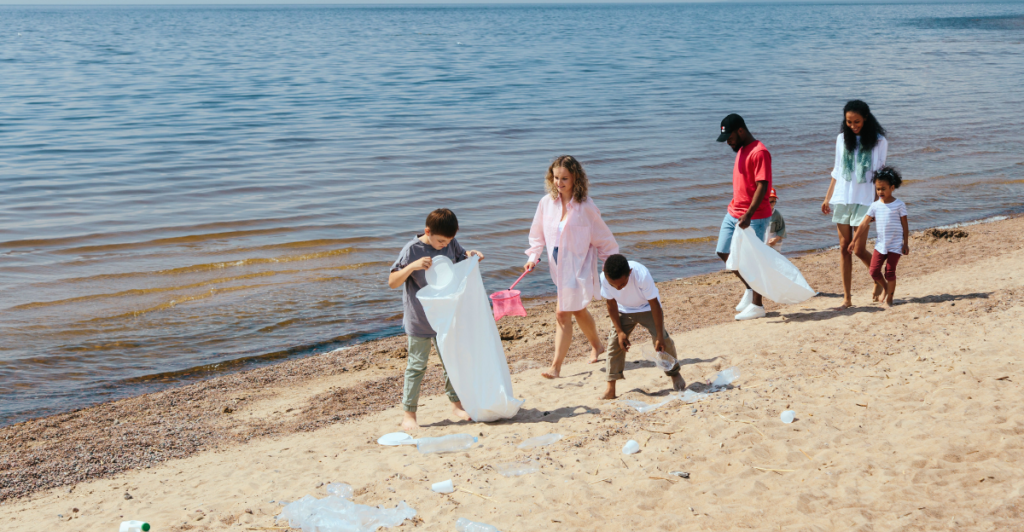
While individuals can’t stop red tide on their own, small actions can make a difference. Avoiding lawn fertilizers, properly disposing of waste, and reporting fish kills can help reduce pollution. Staying informed about red tide conditions can also protect public health. But at the end of the day, real change needs to happen at a policy level to tackle the root cause of the problem.
The Future of Florida’s Waters
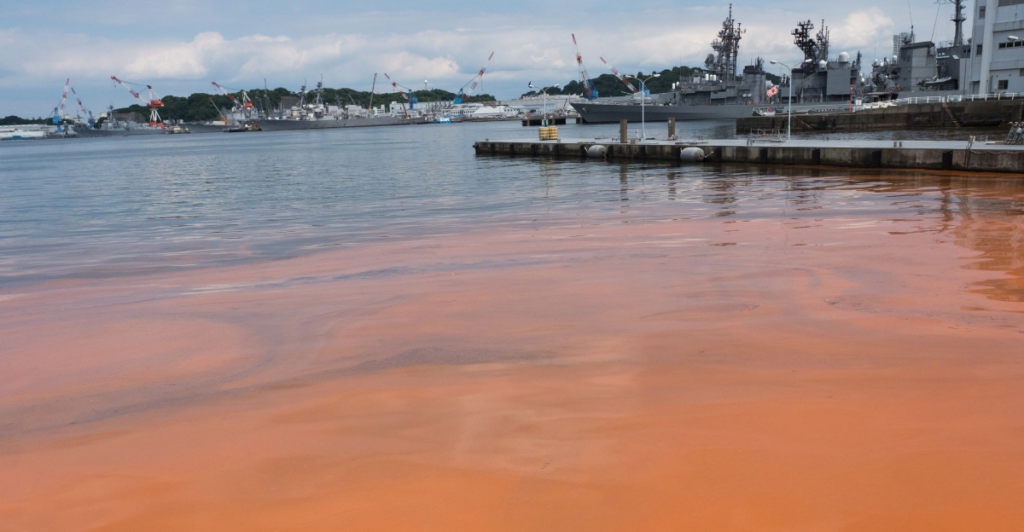
Hurricanes are getting stronger, red tide is getting worse, and unless serious action is taken, this problem isn’t going away. Florida is looking at longer, more toxic blooms, more marine die-offs, and even bigger economic losses. The question isn’t if red tide will return—it’s how bad it will be next time.
So What Now?
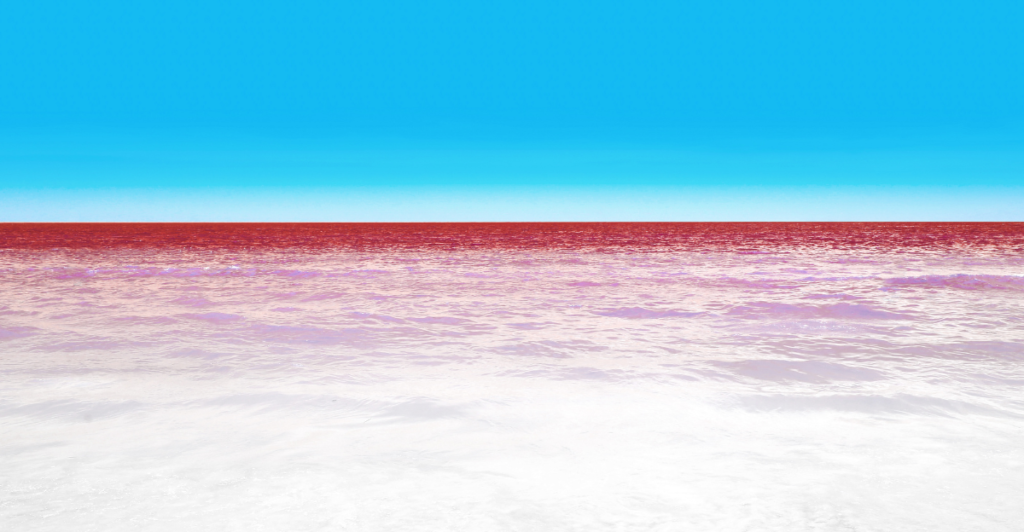
If Florida wants to stop red tide from turning its coastlines into toxic graveyards, action is needed—fast. Stronger pollution regulations, long-term environmental protections, and climate change mitigation must be prioritized. Without these steps, red tide will keep returning more intense, longer-lasting, and deadlier than before. The clock is ticking, and Florida’s waters can’t wait much longer.
Explore more of our trending stories and hit Follow to keep them coming to your feed!

Don’t miss out on more stories like this! Hit the Follow button at the top of this article to stay updated with the latest news. Share your thoughts in the comments—we’d love to hear from you!







